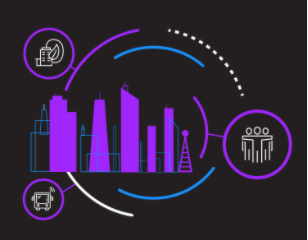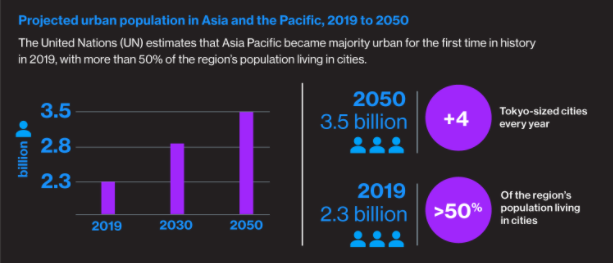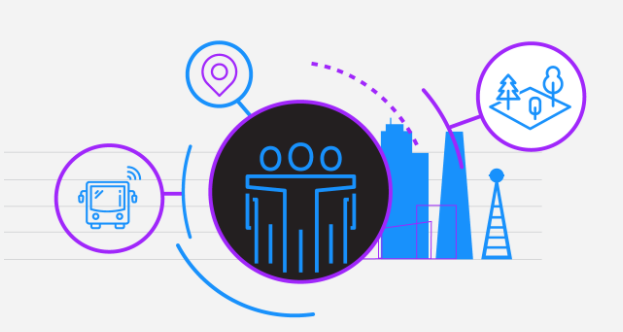From the rise of Japan after World War II to the rapid industrialization of the 'Four Asian Dragons' (South Korea, Taiwan, Singapore, and Hong Kong) from the 1960s to the 1990s, as well as the rapid rise of China in the late 20th century and the rapidly growing Southeast Asian market today, the Asia Pacific region has experienced decades of economic growth.
The core of this transformation is the rapid urbanization of the region. Between 1970 and 2017, developing economies in Asia surpassed the rest of the world in terms of population expansion and growth rate, with urban populations growing by 3.4% annually, while other developing countries grew by 2.6% and developed economies grew by 1%. This pace will continue in the coming years, and by 2050, the region will add over 1 billion new urban residents.

Nowadays, cities in the Asia Pacific region are gaining international reputation, with Auckland, Osaka, Adelaide, Wellington, Tokyo, Perth, Melbourne, and Brisbane ranking among the top 10 in the 2021 Global Habitability Index released by the Economist Intelligence Unit, with 8 of them ranked among them. But in low-income areas of the African continent, citizens face the worst living environment in the world. Among the 100 cities globally threatened by environmental factors such as pollution, extreme heat stress, reduced water supply, natural disasters, and vulnerability to climate change in 2021, 99 are located in Asia.

The urban residents most severely affected by climate vulnerability often come from groups with lower socio-economic status, who may live on dangerous and marginalized land, in low-quality buildings lacking flood control measures and temperature control. They may also not have access to air conditioning and other facilities, and have less financial cushion to withstand income shocks caused by disasters such as floods. As cities develop and economic activities increase, land value and pollution often become more unequal, which is detrimental to low-income citizens who cannot migrate to better areas. Even commendable investments can exacerbate the problem. For example, a public transportation system that reduces transportation time to the central urban area will also increase rent along the route, forcing low-income residents to relocate. Housing in Asia is becoming increasingly unaffordable for many people. An analysis of 211 Asian cities found that median income households are severely unable to afford housing prices. Due to the inability to access affordable housing, many urban residents are satisfied with insufficient housing and can only access limited access to safe drinking water and sanitation facilities.
Although these challenges are broad and diverse, the region can bounce back from its past and present. Singapore is one of the most livable cities in the world, but it started with a difficult beginning, 'recalled Qiu Tengcai, former executive director of the livable cities center at the Singapore Ministry of National Development (MND). In the early 1960s, Singapore developed rapidly, with overcrowding, housing shortages, and many slums, leaving people in impoverished and dirty conditions. The Singapore River is an open sewer with water supply. I remember when I was a child, the faucet would dry all day, but during the monsoon, we would have floods. We have all the urban problems you can think of! Today, our population has doubled, but this city has become more livable, attractive, and resilient.

Now, the Asia Pacific region is making progress, becoming more sustainable, resilient, and inclusive. Cities are beginning to make breakthroughs in exploring innovative response measures to address environmental challenges throughout the region, including utilizing natural resilience such as' sponge cities' to reduce floods and improve air quality, building and renovating old buildings with 'net zero carbon' to make them more responsive to climate, and developing more sustainable transportation solutions. The use of technology can also help cities address service delivery gaps and actively support vulnerable groups, including the digitization of land rights and geospatial maps, assisting citizens in areas without formal address systems, start-ups applications that address urban security challenges, and technological solutions for healthcare and elderly support.